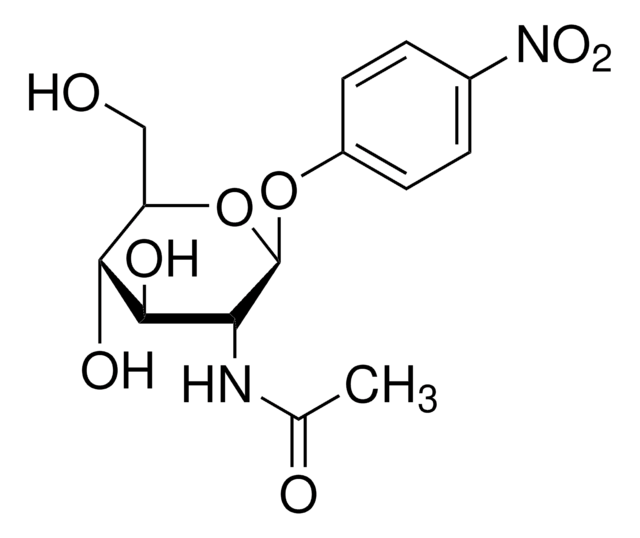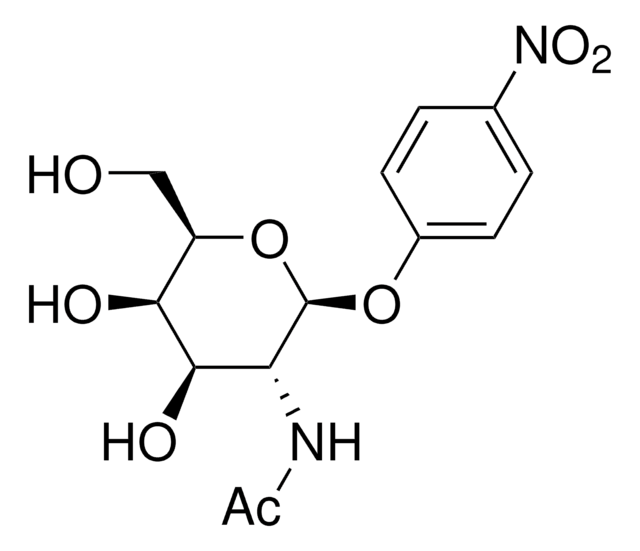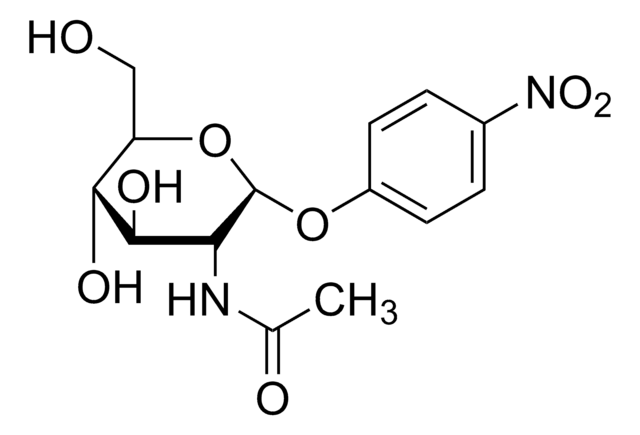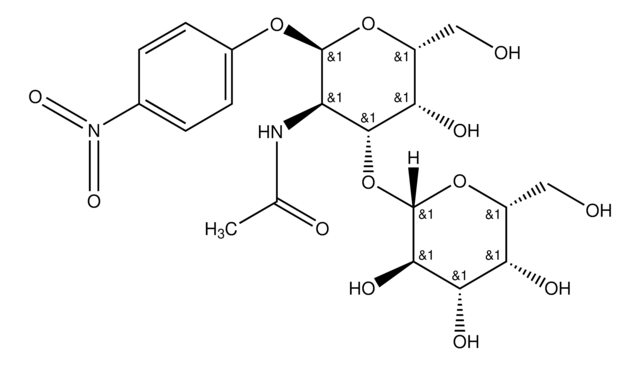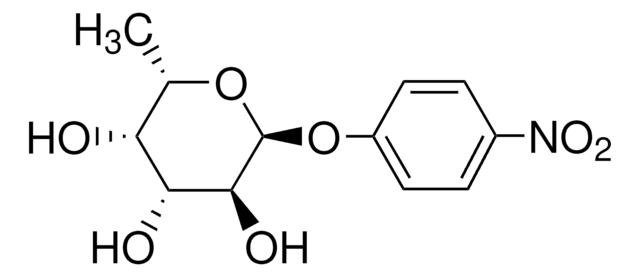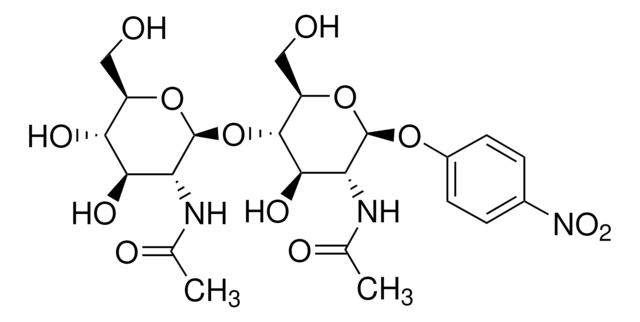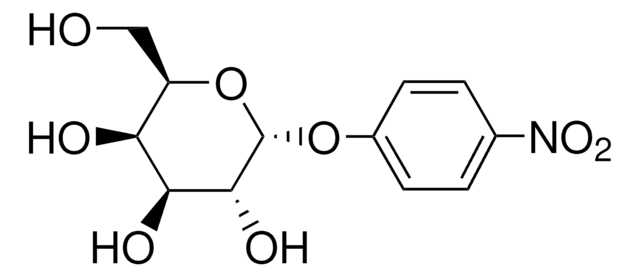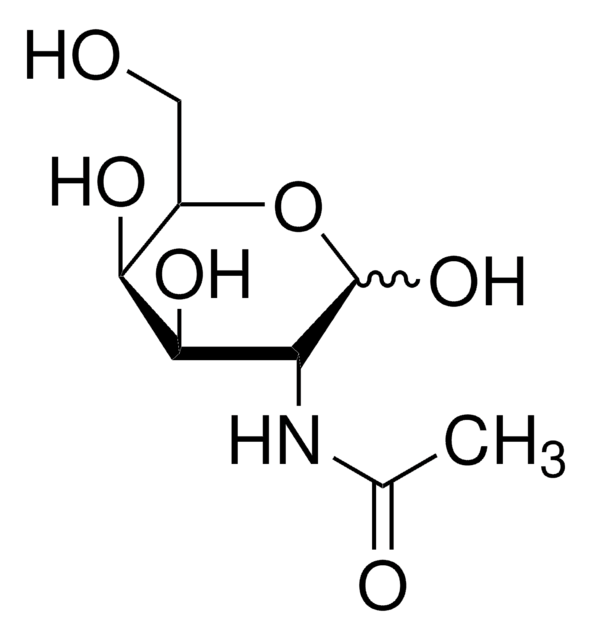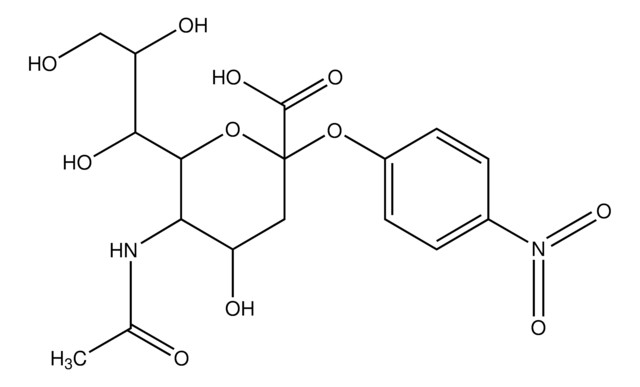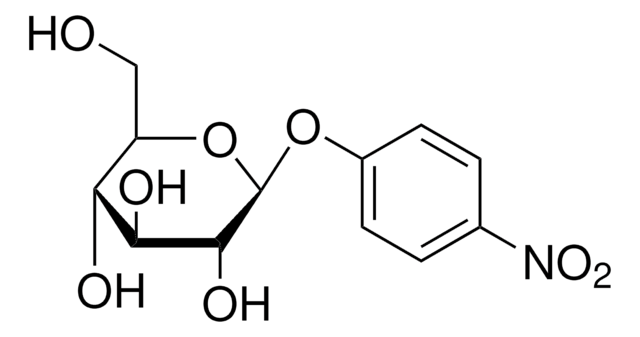N4264
4-Nitrophenyl N-acetyl-α-D-galactosaminide
galactosaminide substrate, ≥98% (TLC), powder
Synonim(y):
p-Nitrophenyl 2-acetamido-2-deoxy-α-D-galactopyranoside
About This Item
Polecane produkty
product name
4-Nitrophenyl N-acetyl-α-D-galactosaminide, substrate for N-acetyl-α-D-galactosaminidase
Próba
≥98% (TLC)
Postać
powder
rozpuszczalność
DMF: 25 mg/mL, clear, colorless to faintly yellow
temp. przechowywania
−20°C
ciąg SMILES
CC(=O)N[C@@H]1[C@@H](O)[C@@H](O)[C@@H](CO)O[C@@H]1Oc2ccc(cc2)[N+]([O-])=O
InChI
1S/C14H18N2O8/c1-7(18)15-11-13(20)12(19)10(6-17)24-14(11)23-9-4-2-8(3-5-9)16(21)22/h2-5,10-14,17,19-20H,6H2,1H3,(H,15,18)/t10-,11-,12+,13-,14+/m1/s1
Klucz InChI
OMRLTNCLYHKQCK-RGDJUOJXSA-N
Działania biochem./fizjol.
Kod klasy składowania
11 - Combustible Solids
Klasa zagrożenia wodnego (WGK)
WGK 3
Temperatura zapłonu (°F)
Not applicable
Temperatura zapłonu (°C)
Not applicable
Certyfikaty analizy (CoA)
Poszukaj Certyfikaty analizy (CoA), wpisując numer partii/serii produktów. Numery serii i partii można znaleźć na etykiecie produktu po słowach „seria” lub „partia”.
Masz już ten produkt?
Dokumenty związane z niedawno zakupionymi produktami zostały zamieszczone w Bibliotece dokumentów.
Klienci oglądali również te produkty
Nasz zespół naukowców ma doświadczenie we wszystkich obszarach badań, w tym w naukach przyrodniczych, materiałoznawstwie, syntezie chemicznej, chromatografii, analityce i wielu innych dziedzinach.
Skontaktuj się z zespołem ds. pomocy technicznej